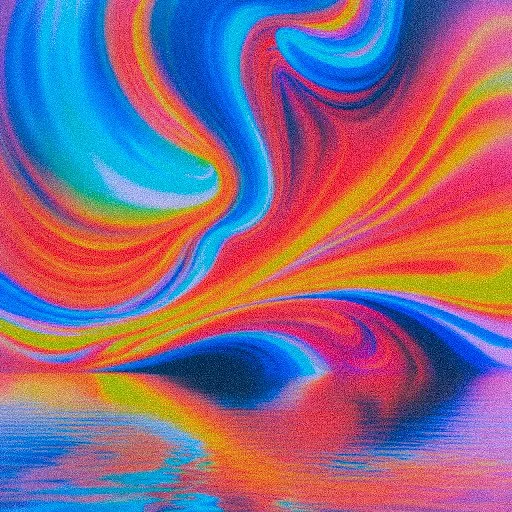Understanding Copyright Implications of AI-Generated Content
ai generated grainy gradient waves
Abstract
I think ‘AI’ has to be one of the most used words in 2023 with new developments seemingly being released daily.
A particular interest of mine is AI-generated images using the likes of DALL-E 2 or Stable Diffusion as I use them as a starting point for my artworks. These algorithms are able to mimic unique and historically significant styles given the right prompt which makes it possible to generate beautiful artworks with ease. However, the ease of use raises questions about whether the human generator is displaying enough creativity or if the AI deserves all the credit.
‘You can have the text. Just not the images!’ — US Copyright Law
In a recent dispute involved an individual named ‘Kris Kashtanova’ who set out to copyright a book that contained AI-generated images from MidJourney.
AI-created images lose U.S. copyrights in test for new technology | Reuters
In short, the author was able to copyright the novel excluding the images because of the fact US copyright law only protects content of ‘human’ ownership. The copyright office even claimed that the author was not the ‘master mind’ of the images therefore having no claim to rights over the images.
Discussions over whether prompt writers are legible to copyright AI-generated works because of the suggested lack of human input. This raises further questions about what constitutes both ‘creative’ and ‘human’ input.
Can I watermark it?
An interesting thing to know about AI-generated artworks is the fact the images are already watermarked but they are hidden!
AI image generators such as Midjourney and DALL-E 2actually place hidden watermarks in the image not on the image so they are not visible to web scrapers collecting.
While watermarking your generations will build a viable connection between the artwork and the human generator, it is unlikely to improve claims to ownership under copyright law. Especially, in places such as America who strictly deem the work as having no ‘human’ author.
Beating Copyright Law?
The law around copyright of AI images is still being discussed and pondered over following the massive interest in the field. The main issue seems to be lack of human input so why not change the image? Even just a bit?
Below is a basic AI generated oil painting of interesting waves using the DALL-E 2 algorithm. The prompt was the following if you want to generate similar:
“vintage game ocean wave supernova oil painting claude monet. high resolution abstract entropy art. holosexual gradient Carton vector art”
potential adjustments on original ai generated image
The top left is the original. The top right is simple greyscale with a slight red tint and the bottom left is darkened greyscale with an object in it. The bottom right has the ‘scandi’ filter applied to it.
Do any of the creations constitute human input? I believe so!
Final Comments
In my opinion, it is possible to fulfil the “human input” requirement of copyright law offices for AI-generated artworks by sufficiently editing them and providing evidence of the editing process. However, if even after substantial editing and cropping, the image remains solely created by the computer, it could be argued that human creativity is not being fully recognized. Also, in that case, the computer needs to be credited for a majority of digital content created today!



